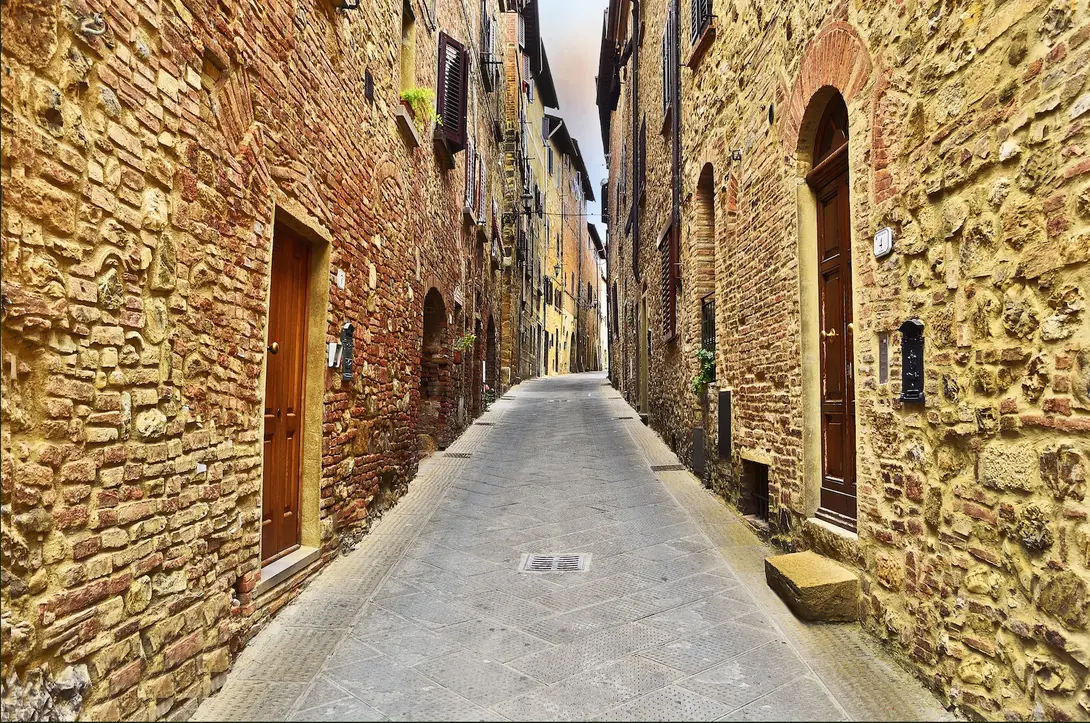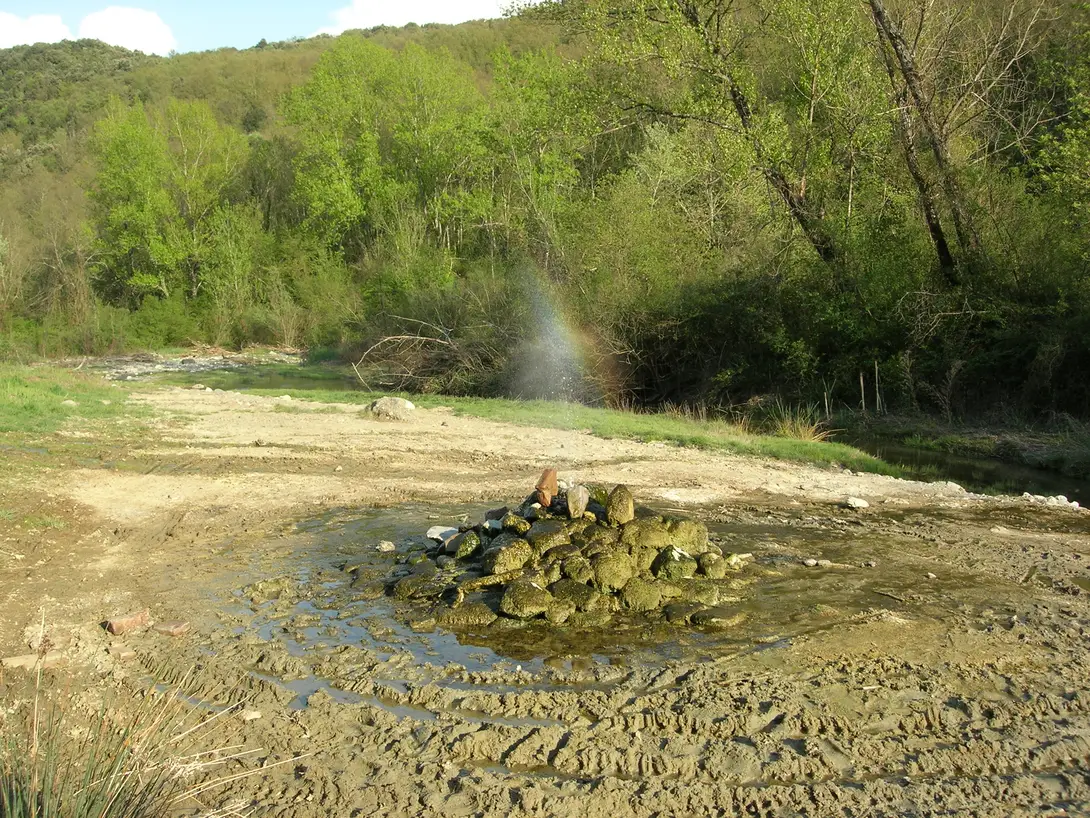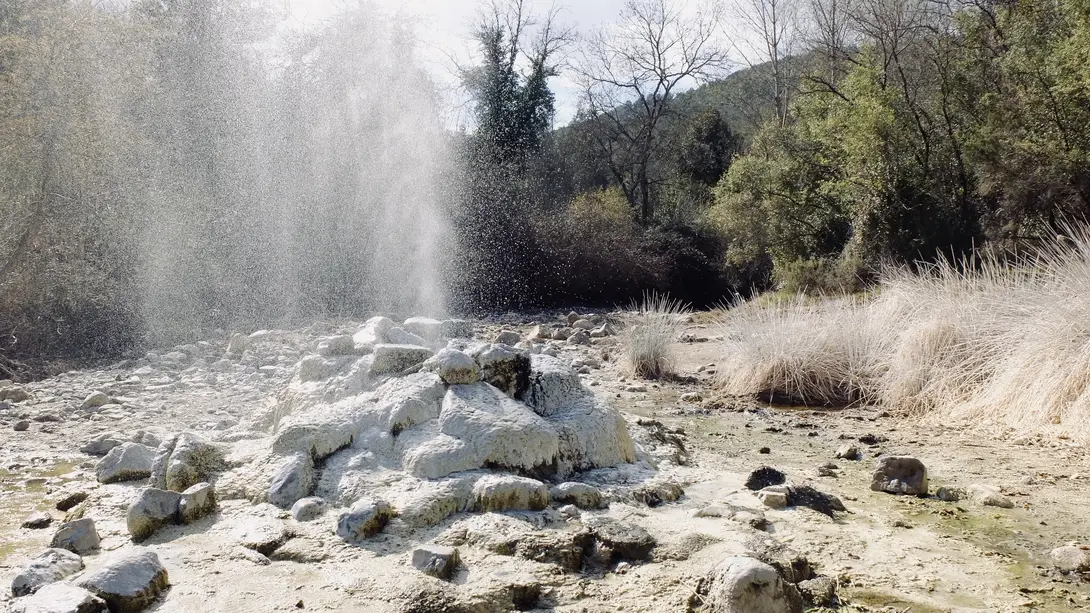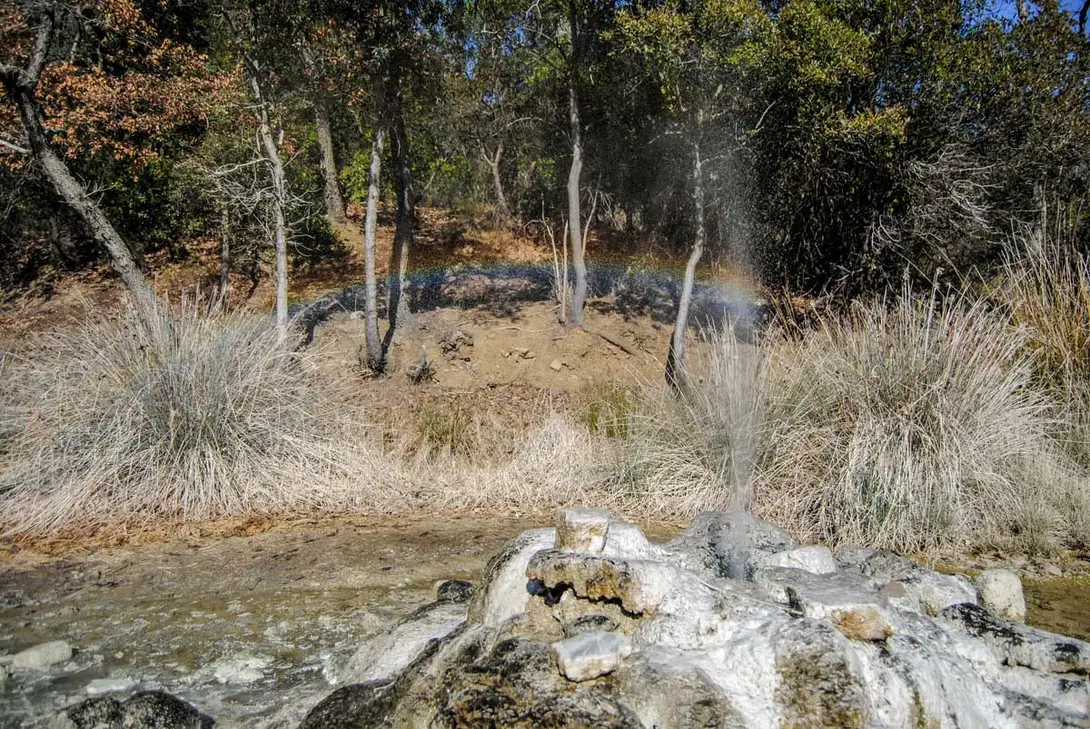
The I Bollori hypothermal spring
Among the wonders provided by nature in the Gambassi Terme area, in addition to the large woodland stretches rich with Mediterranean scrub, you can find some thermal springs phenomena, a little over a kilometre away from the hamlet, in the valley floor of the Casciani Torrent.
The I Bollori hypothermal spring can be reached leaving the hamlet of Gambassi and walking along the section of the Via Francigena road which leads from the hamlet to San Gimignano. It is a walk which affords spectacular views of the Valdelsaarea, Certaldo and the famous San Gimignano towers. Surrounded by vineyards and centuries-old holm oak woods, right after the Casanova hamlet, you take a path on the right that leads to the valley floor of the Casciani torrent. After passing through Santa Teresa, you reach the San Claudio farm. Continuing along the Casciani you quickly arrive to IBollori.
The waters that regularly gush out of the subsoil are distinguished by gas outpourings, together with rises of thermal waters, which reach the highest concentration near the hypothermal spring called I Bollori (23° C)
The waters of the spring are classified as sulphate-alkaline clayey, with a predominance of calcium sulphate due to the washing away of deep evaporite rocks. The presence of sulphate is the reason for the characteristic smell. While flowing, because of the drop in temperature and pressure, it deposits calcium carbonate which forms a kind of mud used for therapeutic purposesand in case of skin diseases.
The thermal waters of Gambassi Terme were already known in medieval times, when Gambassi was a stopping place for pilgrims and wayfarers who traveled along the Via Francigena.
The I Bollori spring has been used by the local population, even in the past, for the treatment of dermatological diseases inanimals.
Ambito Empolese Valdelsa
Etapas
The Old Town of Gambassi Terme
Visiting the Old Town of Gambassi Terme means plunging into a small hamlet made of narrow streets, steep and hidden from view, with stone and brick buildings, which reveal the importance of this ancient strategic centre in the Valdelsa area.
The Gambassi Castle, documented for the first time in 1037 when it came under the control of the Bishop of Volterra, was built by its residents in its current location towards the end of the 12th century.
Its old town, as evidence of this renewal, retains an urban structure showing some degree of planning, laid out on three main streets with a rather straight and parallel pattern, two of which merge into the square of the Castle.
Many ruins of the Gambassi Castle's medieval structures remain and you can glimpse them while walking through the town streets.
Still in the old town, overlooking piazza Roma, is the clock tower which is famous for Membrino, the nickname popularly given to the woodenpuppet that holds the hammer of the bell. It is one of the rarest types of clock puppets existing in Tuscany, along with the Pulcinella one in Montepulciano and the Mangia one in Siena.
Acting today as the meeting point for the many tourists visiting the town, it offers calm and serenity to pilgrims before getting back on their way along the ViaFrancigena road.



